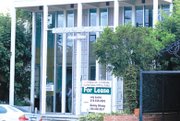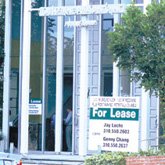Melrose Place Fashion Cachet Questioned
When a Marc Jacobs store debuted on West Hollywood, Calif.’s secluded Melrose Place in 2005, a designer land rush started on the street and the neighboring stretches of real estate on Melrose Avenue and La Cienega Boulevard.
As boutiques for some of the world’s most celebrated designers—including Alexander McQueen, Oscar de la Renta and Carolina Herrera—moved in, rent prices skyrocketed, from an estimated $5 to $6 per square foot in 2004 to $20 per square foot at the height of the street’s value in 2008, according to Chuck Dembo, a partner with Dembo Realty, which currently represents a vacant property on Melrose Place.
Currently, more than seven storefronts are vacant on Melrose Place, and high-profile designer Catherine Malandrino shuttered her Melrose Place–area flagship, Catherine Malandrino Maison, in August. Retailers and landlords are asking if the neighborhood will ever fulfill dreams of being an exclusive fashion neighborhood.
Stephanie Pineo is a co-owner of the vacant 6,000-square-foot building at 653 N. La Cienega Blvd., which housed the Malandrino shop. She forecast that the neighborhood will return to being a place for design and antique shops, which it had been since before the 1960s. “It was a sign of the times,” she said of Malandrino and other fashion boutiques closing. “It was a fashion bubble.”
But boutiques for fashion houses Marni, Diane Von Furstenberg, Vera Wang and Chloe still do business in the area, and they attract other fashion businesses to the street, said Jay Luchs, executive vice president with CB Richard Ellis Inc. Luchs represents several vacant storefronts on the street. “Melrose Place was a trend,” he said. “But it is not finished and done; tenants are still looking to go in.”Prices for Melrose Place commercial real estate range from $7 to $8 per square foot.
Before the recession, it was chic to maintain a secluded boutique where a label’s most fashion-forward collection would be showcased. Now Luchs recommends the street to his clients who can build destination boutiques—shops that people will plan a trip to visit. Post-recession, most retailers seek commercial space on fashion streets that have been proven to attract pedestrian traffic.
One Melrose Place–area shop owner, Isabelle Donola, shuttered her boutique at 8471 Melrose Ave. in September. She blamed a bad economy for the boutique’s demise. But the area also was missing out on crucial tourist dollars, she said. “They spend thousands of dollars, but not so many of them come [to this neighborhood],” she said.
Arcade Boutique retails designer fashion by YigalAzroueuml;l, Doo.ri and Thakoon Addition at 8473 Melrose Ave. Lindsay Lebby, Arcade’s director, said the neighborhood continues to attract a big crowd of shoppers and stylists. “There are a lot of vacancies. But it is more a sign of the times than a sign of the neighborhood,” Lebby said. “We still have the most amazing names in town here.”
More are coming. Interior-design label and dress maker Kelly Wearstler will open a self-named Kelly Wearstler store at 8440 Melrose Ave., a block down from Melrose Place, this fall.—Andrew Asch























